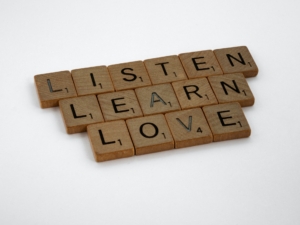Passive-aggressive anger problems include avoidance, abdication, silence, and lateness. If you are tempted to use these as behavior techniques, then knowing more about anger problems will be especially useful to you.
Anger problems damage relationships. If not resolved in a constructive manner, they make communication difficult. Showing overt aggression is the opposite of passive-aggression, but both are anger disorders and neither healthier than the other.
Regular anger vs. Passive-aggressive anger.
 Where they differ is that instead of someone losing their temper and filling the air rage-fueled threats and expletives, someone who is passive aggressive demonstrates this by being late, avoiding asserting themselves, is withdrawn, does not contribute at meetings or family gatherings, is unresponsive (perhaps on email or text), and procrastinates.
Where they differ is that instead of someone losing their temper and filling the air rage-fueled threats and expletives, someone who is passive aggressive demonstrates this by being late, avoiding asserting themselves, is withdrawn, does not contribute at meetings or family gatherings, is unresponsive (perhaps on email or text), and procrastinates.
These may sound like strange ways to display anger, but this concealed form of aggression is one reason why people use it. Since it is more subtle than overt anger, it can be difficult to confront.
Passive aggressive behavior lets someone express anger without making it obvious that this is what they are doing. By virtue of the aggression being concealed, the person is able to deny any accusations that they have anger problems or meant to be aggressive through their behavior.
By now you would have realized that passive aggression is a behavior that we have all probably used before to a greater or lesser extent. It is seen as a fairly common anger management method by people who want to avoid direct conflict.
Be aware that that the behavior of those who consistently display passive aggression throughout their day also resemble those with particular mental health disorders, including:
- Anorexia (self-starvation from the intense fear of becoming fat)
- Self-harm (when you hurt yourself as a way of dealing with very difficult feelings, painful memories or overwhelming situations)
- Borderline personality disorder (extreme mood swings, unstable relationships and trouble controlling emotions)
- Adjustment disorder (an emotional or behavioral reaction to a stressful event or change)
Just because the person does not wear his or her heart on a sleeve, a person who acts in a passive aggressive manner may feel equally angry or have equally severe anger problems as those who display overt aggression.
Defining passive-aggression.
 Someone with anger problems displayed in a passive aggressive manner could, at a family event for example, communicate his or her displeasure by not arriving at the family event at all. On the other hand, if he or she was to join, he or she would intentionally not talk or respond to particular people, also known as giving the silent treatment.
Someone with anger problems displayed in a passive aggressive manner could, at a family event for example, communicate his or her displeasure by not arriving at the family event at all. On the other hand, if he or she was to join, he or she would intentionally not talk or respond to particular people, also known as giving the silent treatment.
This spiteful treatment is typical of passive aggressive actions where people often use this communication style to communicate displeasure or vengeance in return for something they have experienced.
To better understand anger problems displayed as passive aggression, consider these examples:
Avoidance.
There are a great variety of different ways people can practice avoidance to show they are being aggressive, without being obvious about it.
- Procrastination. You do not get to a task that you know will be helpful to someone else if you just got to work and completed it.
- Avoiding returning a call. Why give them the pleasure of your time?
- Keeping some topics off limits. You dodge discussing topics that you know are important to another person.
- Ignoring. You actively avoid someone so you do not have to interact with him or her.
Being late.
Yes, a person can be late on occasion, and being habitually late is not often a sign that there are passive-aggressive anger problems. This plausible deniability is the very reason why it is an effective form of passive-aggression.
When you are running late you simply do not have the time to discuss issues, no matter how urgent and important to those around you. Using this lack of time can make others feel less worthy of space in your already-constrained schedule. This tactic also allows you to avoid uncomfortable situations.
Sarcasm.
 Have you ever received a slight from someone who was smiling at you? Have you given a compliment while side-eyeing someone? What about the laughing or smiley-faced emoji that appears at the end of a hurtful text to define the message as a joke, when it really has a biting message?
Have you ever received a slight from someone who was smiling at you? Have you given a compliment while side-eyeing someone? What about the laughing or smiley-faced emoji that appears at the end of a hurtful text to define the message as a joke, when it really has a biting message?
Sarcasm is a tool that is often used to punish others by saying one thing while communicating the opposite.
Silent treatment.
How do you punish someone without taking overt action against them? You give them the silent treatment. The silent treatment can vary from a blanket ban of interaction. It could look like not responding when someone speaks directly to you and avoiding their calls and emails. The silent treatment can also be refusing to discuss certain topics to blowing hot and cold – ignoring someone, but then flip-flopping before ignoring them again.
Not-so-subtle jibes.
Put downs and negative comments are often synonymous with passive aggression anger issues. It is not out-and-out war, but it is enough to communicate displeasure or make someone else uncomfortable. This can be seen when someone brings up a topic they know is sensitive to you – such as when your parent reminds you and your friends, many years after the fact, that you wet the bed as a child.
Weaponized kindness.
This type of kindness can be considered somewhat insidious. It occurs whenm for example, you angered your mother-in-law by forgetting her birthday and she makes an enormously conspicuous effort to celebrate your birthday, all the while commenting that she would never disrespect you by not showing you how much you mean to her.
Weaponized incompetence.
This is a cynical way to avoid a task or to punish another person. By doing poor work it is possible that a person will not be asked to complete similar tasks in future. Alternately, by only contributing a half-hearted effort, a person may indirectly cause trouble for someone else on their team.
How do you know if someone is struggling with passive aggression?
 To help determine whether or not your partner or someone close to you is struggling with anger problems that display themselves in a passive aggressive manner, then consider these questions and comments:
To help determine whether or not your partner or someone close to you is struggling with anger problems that display themselves in a passive aggressive manner, then consider these questions and comments:
- Is there justification for the person to feel angry or upset, yet he or she does not express it out loud?
- How does the interaction with him or her make you or others feel – perhaps uneasy?
- Over time has your communication with him or her improved, stayed the same or declined? If it has deteriorated, can you put your finger on exactly why? If not, then this supports the view that they struggle with passive aggression.
- Does the person appear to be acting in an aggressive manner, yet he or she denies this to be the case, saying he or she did not intend his or her behavior to be aggressive?
- Anger problems that come out in passive aggressive behavior often see the person’s emotions expressed in what he or she does rather than what he or she says – consider procrastination, always being late, ignoring or use of sarcasm.
Dealing with anger problems that manifest as passive aggressive behavior.
You have heard the phrase, “You can take a horse to the water, but you can’t make it drink.” A difficulty of passive-aggressive behavior is that the person manifesting his or her anger problems in this way is actively trying to hide his or her aggression. Often passive aggressive people do not want others to notice or respond to their anger, but they still want to communicate it.
Christian counseling for passive-aggressive anger.
If you’re looking for additional help in managing anger problems, or perhaps even if someone you love is unable or unwilling to recognize their passive-aggressive anger, then browse our online counselor directory or contact our office to find out how we can help you. We would be honored to walk with you on this journey.
Photos:
“Volcano”, Courtesy of Mitsuo Komoriya, Unsplash.com, CC0 License; “Walking in a Snowy Forest”, Courtesy of Patrick Mueller, Unsplash.com, CC0 License; “Chessmen”, Courtesy of Tamara Gak, Unsplash.com, CC0 License; “Listen, Learn, Love”, Courtesy of Brett Jordan, Unsplash.com, CC0 License









